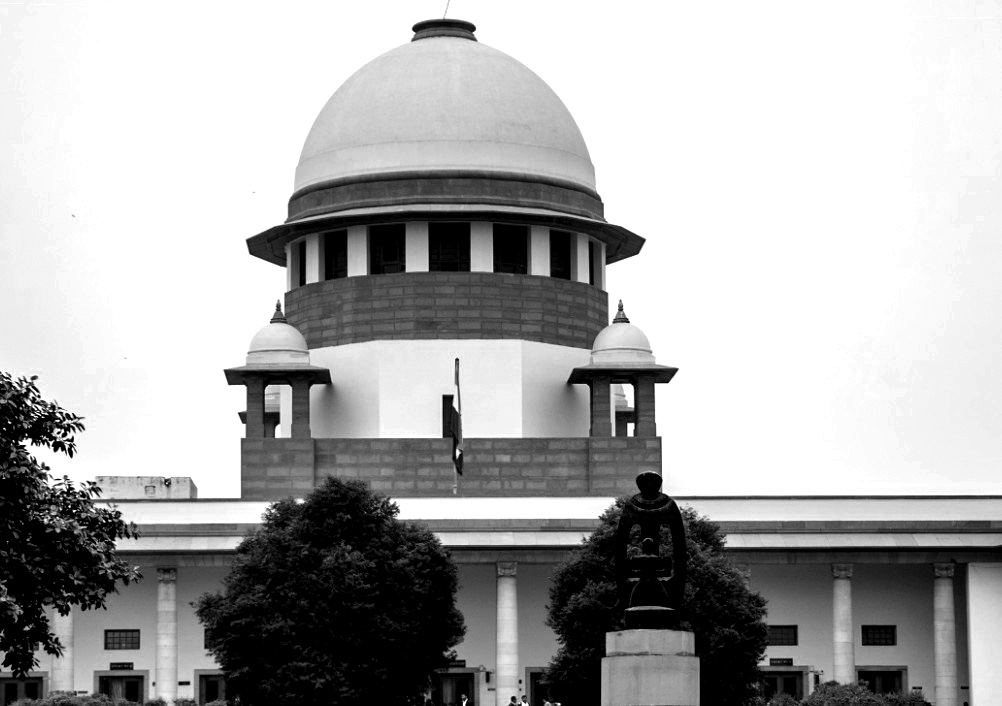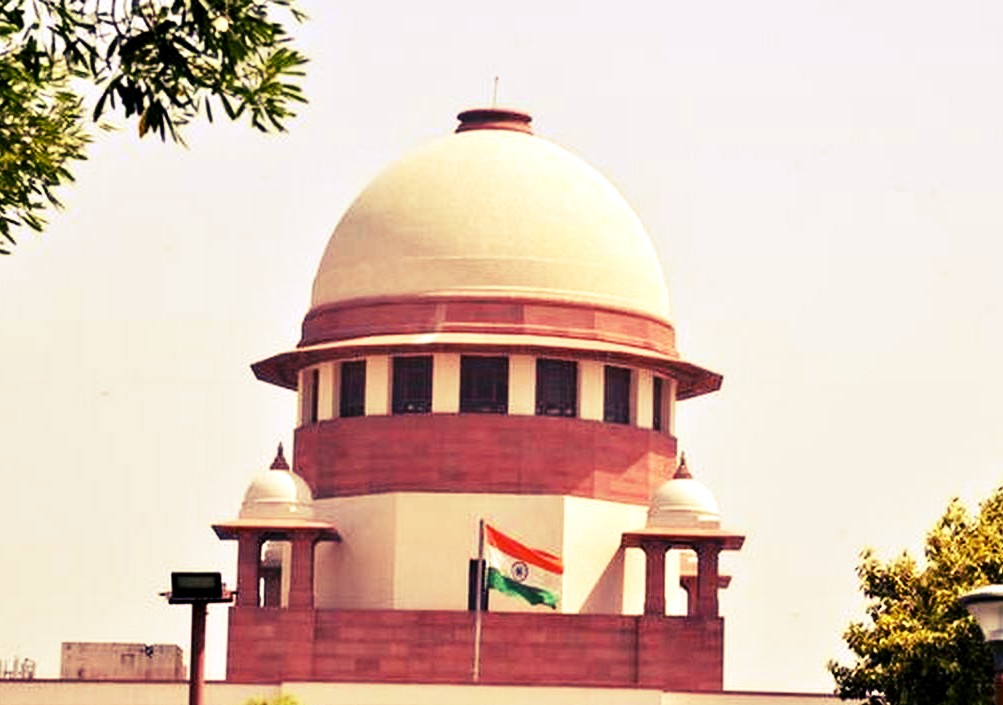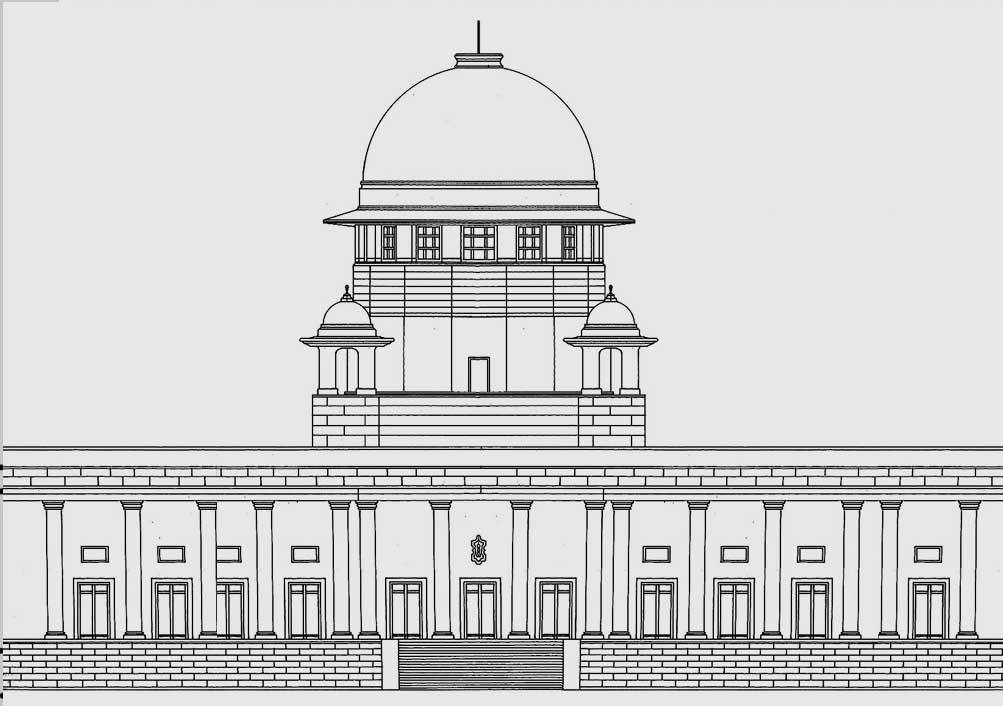Last seen together theory not of any assistance to the prosecution when evidence shows that after the deceased was seen in the company of accused, he was in the company of others as well: Supreme Court
Justices Abhay S. Oka & Ujjal Bhuyan [03-05-2024]

Read Order: ALAUDDIN & ORS v. THE STATE OF ASSAM & ANR [SC- CRIMINAL APPEAL NO. 1637 OF 2021]
LE Correspondent
New Delhi, May 6, 2024: Rejecting the theory of last seen together and noting the material omissions in the testimony of the witnesses, the Supreme Court has acquitted the appellants-convicts in a murder case. The Top Court also highlighted the fact that the Trial Court did not follow the correct procedure while recording the contradictions in the statements of the witnesses.
The appellants are accused nos. 3, 1, 6 and 7 have been convicted for the offences punishable under Section 302, read with Section 149 of the Indian Penal Code . The allegation against the appellants was of committing culpable homicide amounting to the murder of one Sahabuddin Choudhury. This incident occurred in the year 2013 and there were eight accused who were tried for the offence. Out of the eight accused, the Trial Court convicted five. One died during the pendency of the trial.
An appeal against conviction was preferred before the High Court. By the impugned judgment, the High Court confirmed the appellant’s conviction. However, the High Court set aside the conviction of accused no. 5. The case of the prosecution was that accused no. 1 (Md. Abdul Kadir) picked up the victim of the offence from his residence on the date of the incident and took him to Bhojkhowa Chapori Bazar. The accused killed the victim behind L.P. School by assaulting him with a sharp weapon.
The appellant’s Counsel pointed out that even evidence of PW-3 & PW-4 needed to be discarded, as their evidence was full of omissions and contradictions. It was pointed out that PW-6 admitted that her husband had lodged a police complaint against the accused on the allegation that the accused had dispossessed him from his land. He submitted that evidence of last seen together also couldn’t be relied upon. It was contended that while recording the cross-examination of the prosecution witnesses, the contradictions had not been properly recorded in accordance with the law.
The Division Bench of Justice Abhay S. Oka and Justice Ujjal Bhuyan, took note of the fact that the High Court held that only four accused were guilty but Section 141 of IPC defines unlawful assembly as an assembly of five or more persons. The High Court had not held that apart from the present appellants whose conviction was confirmed, others formed part of the unlawful assembly. Hence, there was no unlawful assembly within the meaning of Section 141 of IPC. Therefore, as per the Bench, the appellants could not have been convicted for the offence punishable under Section 302 of IPC with the aid of Section 149.
The Bench was of the opinion that the Trial Court did not follow the correct procedure while recording the contradictions.
It was further explained that Section 162(1) of Code of Criminal Procedure, 1973 provides that any statement made by a person to a police officer in the course of investigation, which is reduced in writing, cannot be used for any purpose except as provided in Section 162. But what is provided in sub- Section (1) of Section 162 does not apply to a dying declaration. The second exception to the general rule provided in sub-Section (1) of Section 162 is that the accused can use the statement to contradict the witness in the manner provided by Section 145 of the Evidence Act. It was also made clear that when a prosecution witness whose statement under Section 161 (1) or Section 164 of CrPC has been recorded states factual aspects before the Court which he has not stated in his prior statement recorded under Section 161 (1) or Section 164 of CrPC, it is said that there is an omission.
The Bench emphasized on the fact that while recording the cross-examination, the Trial Court must record that a particular portion marked. If the witness is intended to be confronted with his prior statement reduced into writing, that particular part of the statement, even before it is proved, must be specifically shown to the witness. After that, the part of the prior statement used to contradict the witness has to be proved. However, in the present case, the Trial Judge did not mark those parts of the witnesses prior statements based on which they were sought to be contradicted in the cross-examination.
Referring to the landmark judgment in Tahsildar Singh & Anr. v. State of U.P., the Bench said, “...every contradiction or omission is not a ground to discredit the witness or to disbelieve his/her testimony. A minor or trifle omission or contradiction brought on record is not sufficient to disbelieve the witnesss version. Only when there is a material contradiction or omission can the Court disbelieve the witnesss version either fully or partially.”
It was noted that PW-2 (Md. Asraful Islam) was declared as hostile and there were material omissions which affected the reliability of PW-4. Moreover, it was very doubtful whether PW-4 had seen the assault on the deceased. The material part of the testimony of PW-5 was also a significant omission which amounted to contradiction. PW-10 was not an eyewitness or a witness who deposed about the last seen together.
Therefore, as far as evidence of assault on the deceased was concerned, there was no reliable evidence to show the involvement of the appellants. The only evidence regarding the last seen together was that on the date of the incident, appellant no. 2 took the deceased on his motorcycle. However, PW-3 has stated that appellant no. 2 took the deceased at 4.00 p.m. to attend a meeting of the Congress Party. He also said that his deceased father was an influential leader of the Congress. Therefore, after 4.00 p.m., there were also persons other than the accused around the deceased.
“The theory of last seen together is helpful to the prosecution if the deceased was seen in the company of the accused in the proximity of the time at which the dead body is found. If the evidence shows that after the deceased was seen in the company of the accused, he was in the company of others as well, the theory of last seen together is not of any assistance to the prosecution. The reason is that the involvement of other persons in the offence is not ruled out”, the Bench said while observing that the fact that appellant no. 2 was found in the company of the deceased at 4.00 p.m. was not sufficient to link him with the commission of the offence of murder. It was held that the theory of last seen together deserved to be rejected. Therefore, the prosecution failed to bring home the charge against the appellants.
Thus, allowing the appeal, the Bench acquitted the appellants of the charges.
Sign up for our weekly newsletter to stay up to date on our product, events featured blog, special offer and all of the exciting things that take place here at Legitquest.




Add a Comment